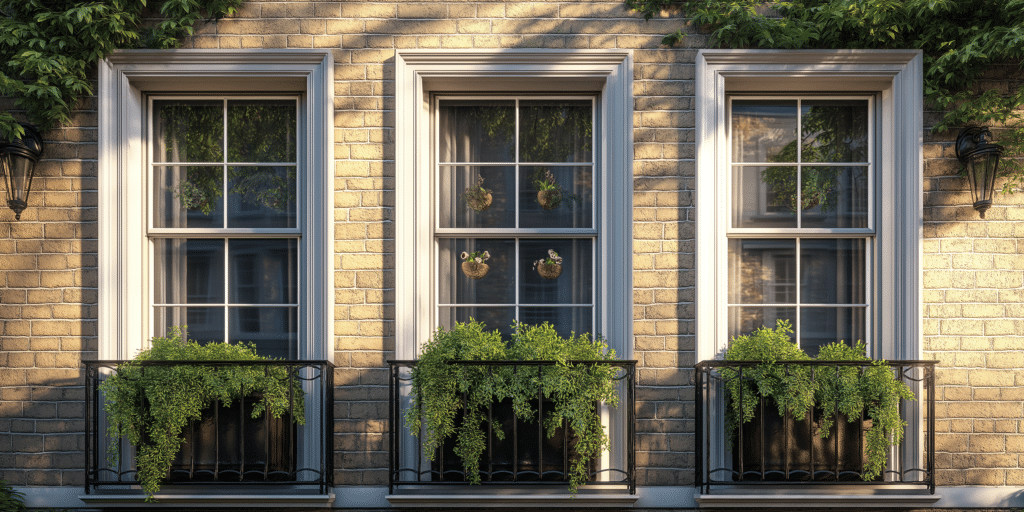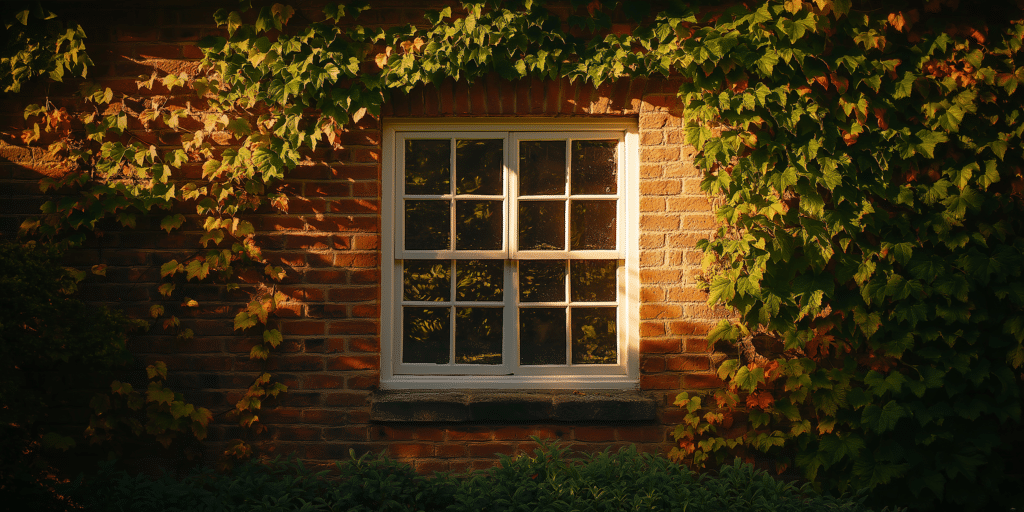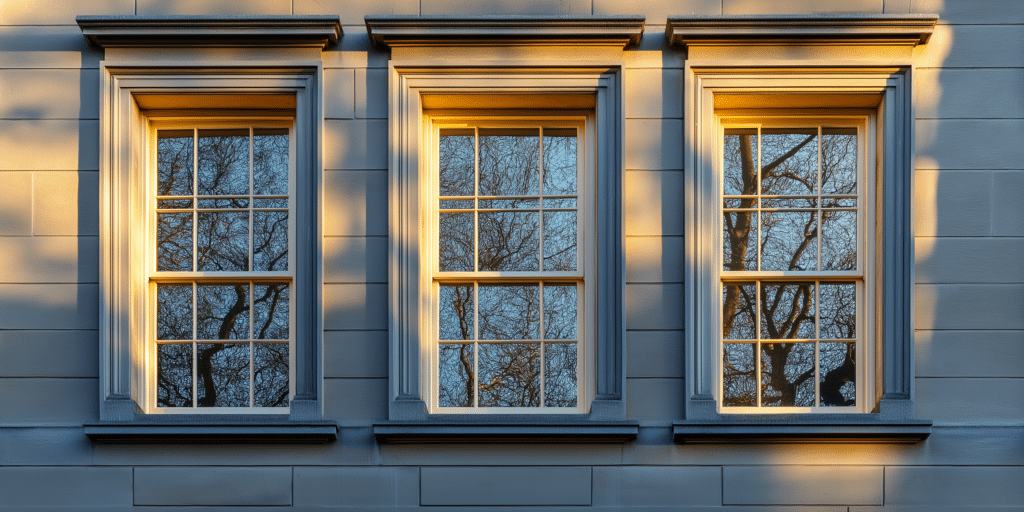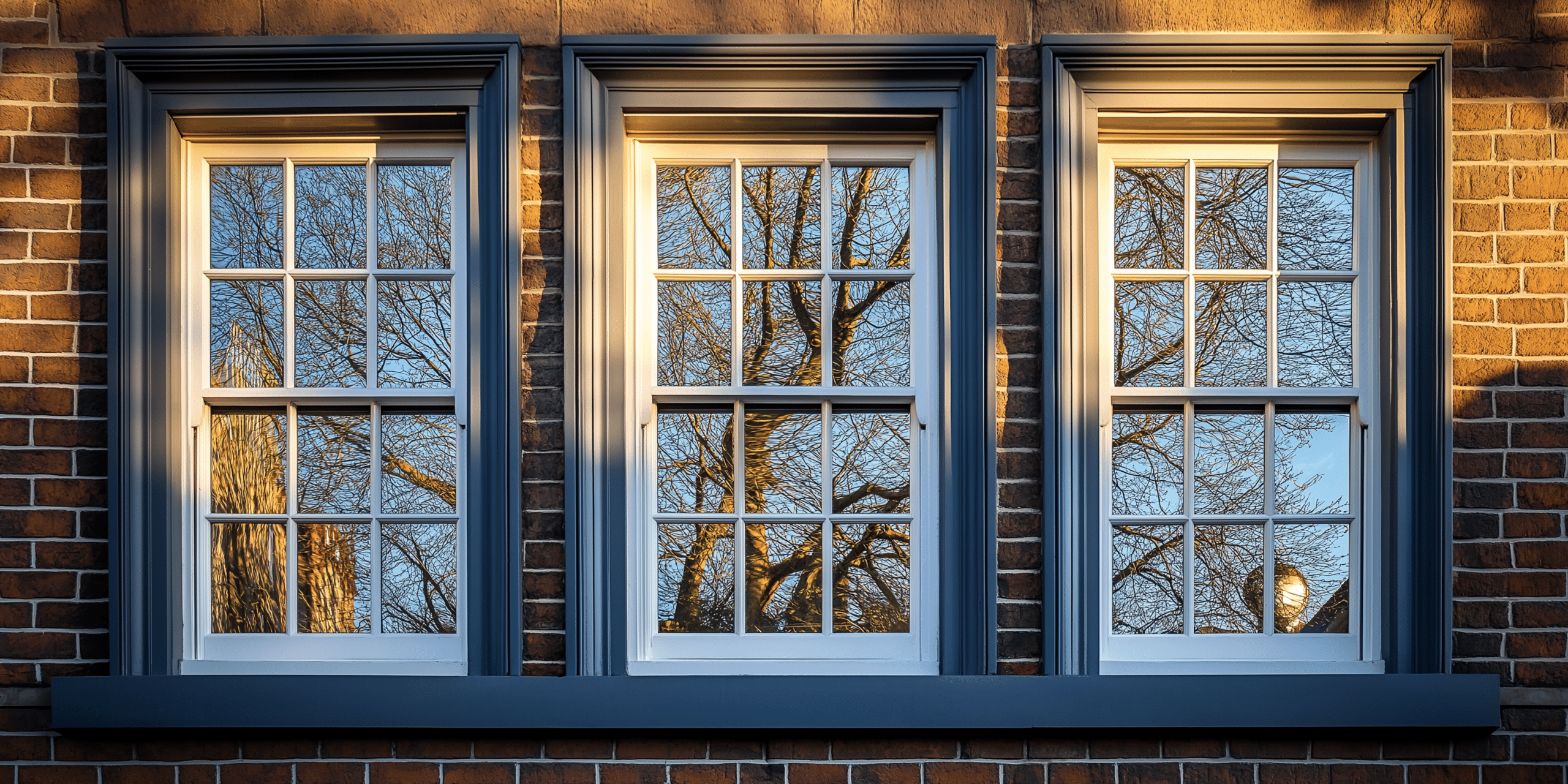Give Your Sash Windows a Stunning New Look
With the right approach, painting sash windows can be a satisfying and cost-effective project that delivers a beautiful finish. DIY painting not only refreshes your home’s look but also saves significantly on costs. According to HomeAdvisor, homeowners save up to 60% on home improvement tasks by opting for DIY over professional services. Here’s how you can achieve a professional-level finish on your own.
Benefits of DIY Painting for Sash Windows
- Cost Efficiency: A DIY project can save you hundreds compared to hiring professionals.
- Enhanced Home Value: A well-painted sash window boosts your home’s appeal and market value.
- Weather Protection: Quality paint helps shield windows from the elements, extending their life and preserving their appearance.
Top Tips for DIY Painting Success
- Prep Work: Clean, sand, and tape the surrounding area. Preparation ensures an even finish and strong paint adhesion.
- Prime First: Use a high-quality primer to create a strong foundation, preventing peeling and improving durability.
- Choose Durable Paint: Opt for weather-resistant exterior paint to ensure your windows withstand the elements.
- Thin Coats Are Best: Apply thin coats of paint, allowing each to dry fully. This approach minimises drips and promotes longevity.
- Ventilation Matters: Ensure adequate ventilation to reduce fumes and support faster drying.
- Seal Edges for Weatherproofing: Proper sealing around edges will enhance durability and protection.
- Invest in Quality Tools: A good brush or roller suited for windows ensures a smooth, clean application.
- Check for Consistency: Sand between coats to maintain an even, professional-grade finish.
- Regular Maintenance: Routine checks and touch-ups help preserve your windows’ look over the long term.
- Seek Expert Guidance: Resources from Sash Windows London offer valuable insights on ideal products and techniques.
Common Questions Addressed
- Time Investment: Expect to dedicate a weekend to this project, including prep, painting, and drying times.
- DIY vs. Professional Finish: While professionals may offer a slightly smoother result, careful DIY efforts can achieve near-professional quality.
- Ensuring Durability: Following these steps and performing regular maintenance will help your paint job last, even matching some professional standards.
Click Start Here for a full materials checklist and get ready to transform your sash windows.
Essential Tools and Materials for Painting Sash Windows
Set Yourself Up for Success with the Right Tools
Achieving a flawless, professional finish on your sash windows starts with having the right equipment. High-quality tools make a noticeable difference, helping you avoid common DIY pitfalls like uneven edges or brush marks. Here’s what you’ll need:
- Paint Brushes and Rollers: Choose angled brushes for precision on edges and smaller surfaces. The U.S. Environmental Protection Agency (EPA) highlights that high-quality brushes reduce the likelihood of brush marks, enhancing the overall appearance.
- Sandpaper: Essential for smoothing surfaces before applying primer. Fine-grit sandpaper is ideal for sash windows.
- Painter’s Tape: Helps achieve crisp, clean lines and protects glass from stray brush strokes.
- Drop Cloths: Protect floors and nearby surfaces from paint splashes, ensuring a clean workspace.
Eco-Friendly and Durable Paint Choices
Using the right paint significantly affects both durability and indoor air quality. Consider these points:
- Low-VOC Paints: Low in Volatile Organic Compounds (VOCs), these paints reduce indoor air pollution by up to 50%, per EPA data. They’re safer for both health and the environment.
- Exterior Grade Paints: Designed to withstand weather, exterior paints provide added durability. Interior paints may not offer the same resilience on sash windows, especially in moisture-prone areas.
- Primer: A high-quality primer is non-negotiable. It ensures better paint adhesion and a longer-lasting finish.
Download Your DIY Checklist
For a full list of recommended tools and materials, download our Painting Sash Windows Checklist. This guide includes eco-friendly options and links to “Recommended Paint Types for Sash Windows,” simplifying your prep and helping you achieve a lasting, professional finish.
Importance of a Clean Surface

Prepare for Success with Thorough Cleaning
Proper cleaning is essential to achieving a long-lasting and smooth paint finish. According to the Paint Quality Institute, 80% of paint adhesion issues stem from inadequate surface preparation, making this step crucial for successful sash window painting. Dirt, grease, and old paint residues can prevent new paint from adhering, leading to peeling and a shorter lifespan of your hard work.
Essential Cleaning Products and Techniques
To avoid damage to your window materials, select cleaners that are both effective and gentle:
- Mild Detergent Solutions: Perfect for everyday grime. Mix with warm water and use a soft cloth or sponge to prevent scratches.
- Mineral Spirits or Denatured Alcohol: Effective for stubborn grease without harming wood or metal.
- Eco-Friendly Strippers: For removing old paint, look for products designed for historical surfaces that won’t damage delicate woodwork.
For historical windows, opt for cleaners specifically formulated to preserve wood integrity and avoid harsh chemicals that can degrade older frames.
Removing Stubborn Stains and Old Paint
Persistent stains and layers of old paint require careful removal to avoid affecting the new finish:
- Sanding: Use fine-grit sandpaper for stubborn areas, and ensure surfaces are smooth for optimal paint adhesion.
- Scrapers and Putty Knives: Ideal for old paint removal, but be gentle to avoid gouging the surface.
Small remnants of old paint can be left if firmly adhered; however, smooth the edges to prevent visible lines under the new coat.
Dry and Protect for Best Results
Moisture is the enemy of good adhesion. Before applying primer, ensure the surface is completely dry to prevent bubbling or blistering. Use protective gloves and eyewear to shield your skin and eyes from cleaning chemicals and any loose debris.
By taking these steps, you’ll set the foundation for a professional finish and a longer-lasting paint job on your sash windows.
Importance of a Clean Surface
Prepare for Success with Thorough Cleaning
Proper cleaning is essential to achieving a long-lasting and smooth paint finish. According to the Paint Quality Institute, 80% of paint adhesion issues stem from inadequate surface preparation, making this step crucial for successful sash window painting. Dirt, grease, and old paint residues can prevent new paint from adhering, leading to peeling and shorter lifespan of your hard work.
Essential Cleaning Products and Techniques
To avoid damage to your window materials, select cleaners that are both effective and gentle:
- Mild Detergent Solutions: Perfect for everyday grime. Mix with warm water and use a soft cloth or sponge to prevent scratches.
- Mineral Spirits or Denatured Alcohol: Effective for stubborn grease without harming wood or metal.
- Eco-Friendly Strippers: For removing old paint, look for products designed for historical surfaces that won’t damage delicate woodwork.
For historical windows, opt for cleaners specifically formulated to preserve wood integrity and avoid harsh chemicals that can degrade older frames.
Removing Stubborn Stains and Old Paint
Persistent stains and layers of old paint require careful removal to avoid affecting the new finish:
- Sanding: Use fine-grit sandpaper for stubborn areas, and ensure surfaces are smooth for optimal paint adhesion.
- Scrapers and Putty Knives: Ideal for old paint removal, but be gentle to avoid gouging the surface.
Small remnants of old paint can be left if firmly adhered; however, smooth the edges to prevent visible lines under the new coat.
Dry and Protect for Best Results
Moisture is the enemy of good adhesion. Before applying primer, ensure the surface is completely dry to prevent bubbling or blistering. Use protective gloves and eyewear to shield your skin and eyes from cleaning chemicals and any loose debris.
By taking these steps, you’ll set the foundation for a professional finish and a longer-lasting paint job on your sash windows.
Masking Techniques to Protect Adjacent Surfaces
Achieving a clean, professional finish when painting sash windows requires thorough masking to protect areas you don’t want painted. Professional painters spend up to 30% of their time on masking and preparation for a reason—it’s essential to achieving crisp, sharp edges without unwanted splatters or smudges.
Choosing the Right Tape for Precision
High-quality painter’s tape is crucial for preventing paint bleed and ensuring sharp lines. Look for blue or green painter’s tape specifically designed to adhere to various surfaces without leaving residue or damaging frames or glass. Lower-quality tapes may allow paint to bleed underneath or leave sticky residue, which can complicate cleanup.
Materials for Comprehensive Protection
Protect floors, sills, and nearby surfaces using:
- Drop cloths for floors and any other large adjacent surfaces.
- Plastic sheeting or paper for windowsills and hardware to guard against drips.
Tips to Prevent Paint Bleeding and Ensure Clean Edges
To avoid paint bleeding under the tape:
- Press the tape firmly along the edges, especially around corners and grooves.
- Remove the tape while the paint is still slightly damp to prevent tearing and smudging.
By following these masking techniques, you’ll achieve a polished, professional look that rivals the work of experienced painters.
Selecting the Best Primer for Sash Windows

Choosing the right primer for sash windows is critical to achieving a smooth, durable paint finish. Primers enhance adhesion and prevent imperfections, setting a strong foundation for the final coat.
Types of Primer Based on Material
- Wood Primers: Traditional sash windows benefit from primers designed specifically for wood, such as oil-based or latex primers. These primers block tannins that could bleed through and ensure a smooth surface.
- Metal and Plastic Primers: If your windows have metal or plastic components, choose primers that cater to these materials to ensure proper adhesion.
Benefits of Using Primer
The Paint Quality Institute states that primer improves paint adhesion by up to 50%, enhancing durability and ensuring a uniform finish. Primer also helps block any stains or old paint, which is essential for creating a seamless final look.
Tips for Effective Priming
- Stain-Blocking and Adhesion-Boosting Primers: These can be helpful for older windows with previous paint layers or wood tannins. They seal stains, ensuring they won’t interfere with the final colour.
- Fast-Drying Primers: These are great for quick projects, cutting down wait times without sacrificing quality.
- Tinted Primers: Tinted primers match your paint colour closely, giving a richer, more vibrant finish.
Common Questions Answered
- What primer should I use on older sash windows? Opt for an adhesion-boosting primer that blocks stains to prevent bleed-through.
- Does primer really make a difference in the final result? Absolutely. Primer lays the groundwork for smoothness and durability.
- How long should primer dry before applying paint? Allow at least 1-2 hours; follow the manufacturer’s instructions for optimal results.
Best Practices for Painting Window Frames
Achieving a smooth, professional finish on your sash window frames requires careful technique. Start with a plan and the right tools to make each brushstroke count, minimising drips and streaks for a flawless look.
Step-by-Step Techniques for a Smooth Finish
- Begin with Light Coats: Avoid thick, heavy coats that can lead to paint runs. Thin, even layers dry faster and produce a smoother finish, essential for detailed sash frames.
- Paint from Top to Bottom: Painting top-down gives better control over drips, allowing gravity to help with smooth coverage. According to the American Coatings Association, this technique helps reduce paint consumption by up to 10%.
- Use Long, Smooth Strokes: Employ continuous, sweeping strokes rather than short, choppy ones. This technique minimises brush marks, providing a polished appearance.
Techniques for Edges and Corners
- Start with Edges and Corners: Apply paint to edges and corners first to prevent overloading these detailed areas. A smaller brush, around 1-1.5 inches, offers precision without sacrificing coverage.
- Prevent Brush Marks: For frames, opt for high-quality synthetic brushes, which hold paint evenly and reduce visible strokes. Smooth the paint with a final stroke to blend and reduce lines.
Essential Tips for Success
- Avoiding Paint Bleed: Use painter’s tape around glass or adjacent surfaces to ensure sharp, clean lines.
- Remove Tape When Paint is Damp: Lifting the tape slightly before full drying prevents chips, preserving clean edges.
These methods ensure a refined finish that enhances your sash windows’ appearance while prolonging the life of the paint job.
Techniques for Painting Sash Window Sashes
Painting sash window sashes requires precision to ensure smooth operation and prevent them from sticking. With these step-by-step techniques, you’ll achieve a flawless finish while maintaining full functionality.
Step-by-Step Painting Techniques
- Position the Sashes Open: Begin with the sashes slightly open, so you can access all edges without sealing them shut. This allows the paint to dry without bonding the movable parts together, maintaining smooth movement.
- Apply Thin Layers: For best results, apply thin, even layers of paint. Thicker coats increase the risk of sticking and can cause paint to seep into unwanted areas. Experts, including the Paint and Decorating Retailers Association, recommend allowing each coat to dry for at least 24 hours to avoid stickiness.
- Paint from Edge to Centre: Start by painting along the sash edges, moving inward. This technique ensures coverage without overloading the edges, where excess paint can easily lead to bonding.
Tips for Avoiding Common Issues
- Choose the Right Brush Size: A small brush (around 1 inch) works best for detail work along the sash, giving control in tight areas.
- Avoid Overlapping with Frame: To prevent sticking, avoid painting beyond the sash edges. Painting only on the sash ensures that it remains free-moving once dry.
- Number of Coats: Two to three light coats are ideal for durability without hindering movement. Ensure each coat is fully dry to keep the sashes functional.
Painting with these techniques preserves the function and appearance of your sash windows, resulting in a professional and long-lasting finish.
Proper Drying and Curing Times for Painted Windows

Ensuring your freshly painted sash windows dry and cure properly is essential for a smooth, long-lasting finish. While it’s tempting to use the windows right away, patience during this phase ensures durability and prevents damage.
Drying vs. Curing: What’s the Difference?
- Dry to Touch: Paint may feel dry within hours, but this only means the top layer has set. Handling it at this stage can still leave smudges.
- Full Cure: Curing, however, takes significantly longer. The Paint Quality Institute advises that paint can take anywhere from 7 to 30 days to cure completely, depending on the type of paint, humidity, and temperature. Fully cured paint is highly resistant to chips and scratches.
Factors Affecting Drying Time
- Humidity and Temperature: High humidity or low temperatures can slow down drying. Ideal conditions include moderate humidity and temperatures between 15–25°C.
- Ventilation: Good airflow helps expedite the process, so consider opening nearby doors or windows (avoiding direct wind on the painted surface).
Tips for Optimal Drying
- Preventing Dust: To keep dust from settling on the drying paint, cover nearby areas and avoid stirring up dust in the room.
- Handling Windows Before Full Cure: Avoid using the windows until the paint is fully cured, as early movement can damage the finish.
By following these steps, you’ll achieve a professional-looking, durable paint job that stands the test of time.
Inspecting Your Work for a Flawless Finish
The final step in any painting project is a thorough inspection, which ensures the polished, professional look you’ve worked hard to achieve. Here’s a step-by-step guide for a flawless finish on your sash windows.
Checklist for a Detailed Inspection
- Examine in Natural Daylight: Natural light helps reveal streaks, drips, and uneven spots more clearly. According to experts, inspecting under direct sunlight or bright daylight uncovers imperfections that indoor lighting might miss.
- Look for Streaks or Drips: Check each surface for any drips, brush marks, or streaks. If you find any, lightly sand the area with fine-grit sandpaper once it’s dry, then touch it up with a small brush for consistency.
- Inspect for Smooth Movement: Test the sash movement to ensure paint hasn’t created any resistance. Gently open and close each sash; if they stick, lightly sand the edges to restore smooth operation without chipping.
Quick Fixes for Minor Imperfections
- Touch-Up Tips: For tiny inconsistencies, use a fine brush to add thin layers where needed. Keep the layers minimal to maintain a cohesive finish.
- Final Cleaning: Clean your brushes and tools right after use. This not only keeps your equipment ready for future projects but also ensures no paint residue transfers back onto your freshly painted surface.
Ready for Use?
After inspection and touch-ups, it’s best to allow a bit more time before regular use. Even if paint feels dry, it benefits from additional curing time, which fortifies it against chips and wear.
Maintaining Your Newly Painted Sash Windows
Proper maintenance keeps your painted sash windows looking fresh and extends the life of the paint, protecting your hard work for years to come. Here’s how to ensure your windows remain in excellent condition.
Gentle Cleaning Techniques
- Regular Cleaning: Clean your windows every few months using mild, non-abrasive soap and water to avoid scratching the paint. A soft cloth or sponge works best.
- Avoid Harsh Chemicals: Steer clear of strong cleaners that can degrade the paint. Gentle solutions not only preserve the finish but also keep windows looking new.
Touching Up Minor Scuffs and Chips
Even with the best care, minor chips can occur. Tackle these early with these simple touch-up tips:
- Use a Small Brush: For small chips, apply paint sparingly with a fine-tipped brush to blend seamlessly with the existing finish.
- Light Sanding for Smoothness: If necessary, lightly sand the area to create a smooth surface before touching up.
Seasonal Inspections and Weather Protection
- Inspect Seasonally: At the start of each season, examine for any signs of wear, especially around moving parts. Early repairs prevent larger issues.
- Weather-Resistant Tips: Add a protective clear coat to bolster paint against harsh weather. This step can reduce weather-related paint wear, especially in extreme climates.
According to the Paint Quality Institute, seasonal upkeep, including touch-ups, can extend the life of painted surfaces by up to 30%. Regular care not only preserves appearance but also ensures the functionality of your sash windows.
Need More Help? Contact the Experts at Sash Windows London

When it comes to sash windows, nothing beats the precision and durability that come from a professional touch. At Sash Windows London, we offer expertise honed over years of maintenance and restoration work, ensuring your windows not only look great but last longer. If you’ve run into unforeseen challenges with your DIY project—an issue nearly 70% of homeowners experience according to Angie’s List—you’re not alone. That’s why our team is here to help.
Why Choose Sash Windows London?
- Specialised Knowledge: Our team understands the nuances of sash windows, from selecting the best materials to overcoming common restoration challenges.
- Tailored Services: Whether it’s achieving a flawless finish or addressing specific painting obstacles, we provide customised solutions that fit your needs.
- Reliable Quality: Professional support ensures a high standard of work that will stand up to wear, weather, and time, providing peace of mind with every job.
Free Consultation and Exclusive Tips
Get in touch for a free consultation or explore our range of exclusive tips and DIY resources, tailored to help you make the most of your project. Our experts at Sash Windows London are just a call or click away, ready to provide support that enhances your home’s aesthetic and structural integrity.
Contact Us to get started, or check out our resources for more on maintaining your sash windows for years to come.
FAQ Section
Can I paint sash windows in cold weather?
Painting in cold temperatures can impact both adhesion and drying times, potentially compromising the durability of your work. The Paint and Decorating Retailers Association suggests keeping temperatures between 50-85°F (10-30°C) for the best results. Below 50°F, paint struggles to adhere and may result in peeling or cracking. If conditions aren’t ideal outdoors, consider moving your project indoors or protecting your windows from the cold.
- Lowest Temperature: Avoid painting below 50°F (10°C).
- Protecting Fresh Paint: Indoor painting or additional coverings can help during colder periods.
- Recommended Action: Delay outdoor painting if temperatures are consistently low.
How long should I wait before cleaning freshly painted windows?
Allowing the paint to fully cure before cleaning is essential for maintaining a pristine finish. Most experts recommend waiting at least 30 days to ensure durability. For the first clean, use a soft, damp cloth and mild soap to avoid damaging the paint.
- First Cleaning: Wait 30 days after painting.
- Safe Products: Use gentle cleaning agents.
- Benefit: A soft, regular clean helps keep the paint fresh.
Do I need to sand between coats of paint?
Sanding between coats improves paint adhesion and results in a smoother finish. The American Coatings Association recommends using 220-grit sandpaper to remove small imperfections, which allows each coat to bond more effectively and enhances the final appearance.
- Best Grit: Use 220-grit sandpaper.
- Dust Control: Wipe off particles between coats for a cleaner result.
- Tip: This step is especially helpful with water-based paints for a smooth finish.
Can I paint over old paint, or do I need to strip it first?
Stripping isn’t always required, but it may be necessary if the old paint shows signs of peeling or damage. The National Association of Home Builders advises stripping when the paint layers are thick or uneven. When repainting over well-prepared surfaces, the new paint can adhere sufficiently for lasting results.
- When to Strip: Required if the old paint is peeling.
- Prep Steps: Sand and clean the old paint layer for optimal adhesion.
- Risks: Painting over poorly prepared surfaces can reduce longevity.
What’s the best paint type for sash windows?
Choosing between oil-based and water-based paints depends on your needs. Oil-based options offer durability but have higher VOC levels, while low-VOC, water-based paints are better for indoor air quality. For exterior windows, UV-resistant paints provide added protection from sun damage.
- Outdoor Durability: Use UV-resistant paint for exterior windows.
- Eco-Friendly Options: Low-VOC, water-based paints are preferred for interiors.
- Finish Recommendation: Satin or semi-gloss finishes provide a clean look and easy maintenance.
How often should I repaint my sash windows?
On average, sash windows should be repainted every 5-7 years, though exposure to the elements may shorten this timeframe. Regular inspections help spot wear and ensure timely touch-ups, extending the life of your paint job. Under ideal conditions, a well-maintained paint job can last up to a decade.
- Frequency: 5-7 years; inspect yearly for signs of wear.
- Signs to Repaint: Look for peeling, fading, or cracking.
- Maintenance Tip: Routine cleaning and minor touch-ups prolong paint life.







